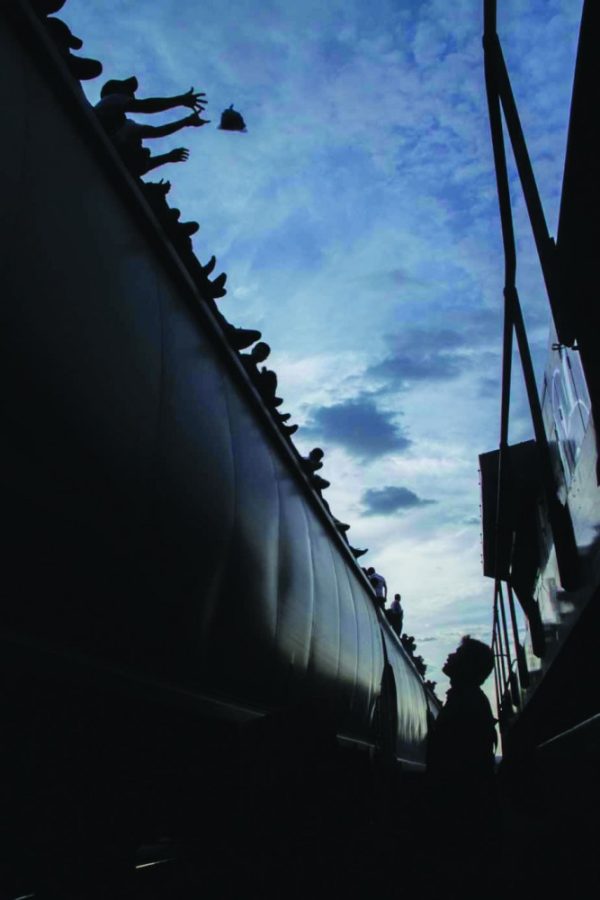The “In Transit/En Tránsito” exhibition at the UA Museum of Art explores the migration between the United States, Mexico and Central America through artistic expression.
Artists interpret the movement of cultural ideas and people through these regions despite the division of borders. The exhibition showcases these journeys and the politics that are attached to them. “In Transit/En Tránsito” presents a new perspective of migration and resistance.
This exhibition, co-curated by assistant professors in the Department of Spanish and Portuguese Kaitlin Murphy and Anita Huizar-Hernández, has ran since Sept.16 and will continue until March 11. The beginning of November brings special events on behalf of the exhibition.
“We are excited that there has been great interest in the exhibition, lecture, and symposium from people both on and off campus,” Huizar-Hernández said in an email.
New York University Professor and Modern Languages Association president Diana Taylor will present the lecture “Seeking Life on the Roads of Death: The Madres Movement in Central America” as part of the Tucson Humanities Festival on Nov. 1 at 5:30 p.m. at the Center for Creative Photography.
RELATED: Film at the Fence brings cinema to the border
There will also be an all-day symposium on Nov. 2. According to the press release, the symposium will “discuss artistic practice, resistance and social transformation in relation to transnational migration and human rights politics, in the Sonoran Desert borderlands and regions of the United States, Mexico and Central America.”
“This project comes at an especially crucial moment as debates surrounding border issues dominate our national political scene, but rarely go beyond talking points,” Huizar-Hernández said in a press release. “By gathering scholars, artists, and activists whose work examines borderlands in all their complexity, this project will push beyond surface level arguments to contextualize this hot-button issue.”
The artists featured in the exhibition include Cognate Collective, Moysés Zúñiga Santiago, Margarita Cabrera, Postcommodity and Alfred J. Quiroz.
Cognate Collective is a collection of art that explores borderland themes. According to the press release, the collective’s art delves into “migration, informal economies, and the construction of collective identities through popular cultural in order to examine the transnational communities that borders produce.”
Santiago is a Mexican photojournalist who has photographed migrants crossing borders in Central America, Mexico and the United States and conflicts between Zapatistas and the Mexican government, according to a press release. He has worked for the Associated Press and was awarded the Rory Peck Training Fund grant.
RELATED: UA Museum of Art’s Mapping Q exhibit explores LGBTQ representation
Cabrera is is an Texan artist whose work looks at labor, immigration and border relations, according to the press release. She has been featured in multiple galleries, including New York’s Meltzer Gallery and the Los Angeles County Museum of Art.
Postcommodity is another arts collective. According to a press release, the collective “engages an indigenous lens to create art within and about the borderlands.” The art has been showcased within the United States and internationally.
Quiroz is an artist and UA School of Art professor. His work includes focuses on border issues, history as satire and social politics, according to the press release. Quiroz has been featured in the Scottsdale Museum of Contemporary Art and the Tucson Museum of Art.
Follow Daily Wildcat on Twitter









